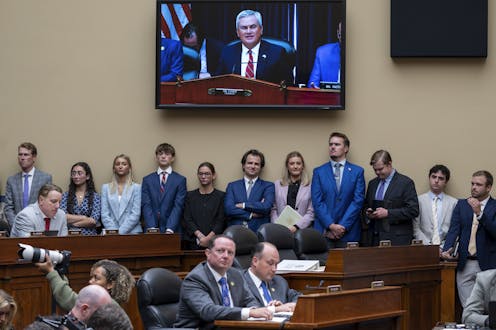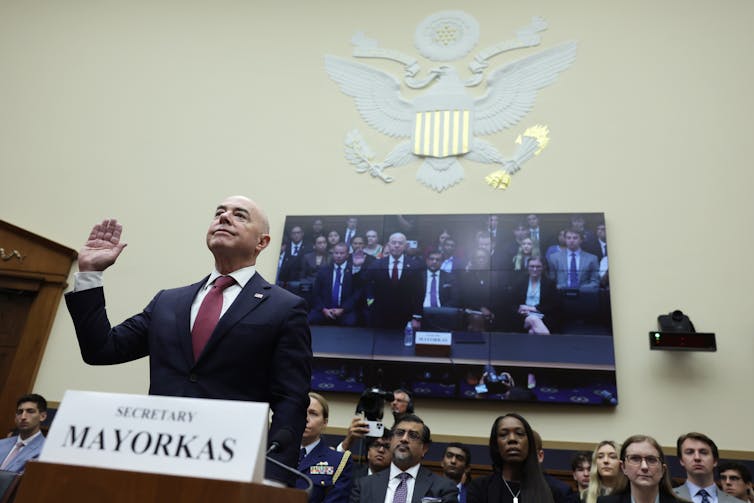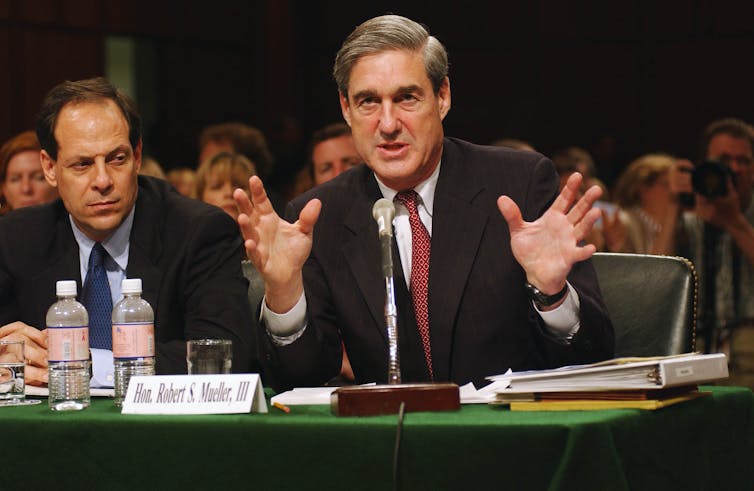
Since Republicans regained the majority in the House of Representatives in the 2022 midterm elections, they have initiated a flurry of investigations. Among their targets: the origin of the COVID-19 virus, the FBI’s law enforcement and surveillance activities and Hunter Biden’s business relationships. House Speaker Kevin McCarthy of California even spoke recently of a possible presidential impeachment inquiry.
Everyone loves congressional oversight – at least in theory. Both Democrats and Republicans have consistently maintained that holding institutions accountable via rigorous oversight and investigations is among the most important functions of the legislature, the so-called “people’s branch” of government.
In practice, however, Congress’ investigative work is influenced by partisan considerations. Scholars have demonstrated that committees conduct more oversight under divided government, when Congress and the presidency are controlled by opposing parties. One reason for this may be that congressional investigations of the incumbent administration drive down the president’s approval rating.
But if more oversight does not necessarily equate to better oversight, then what does? How do we know when committees are using oversight as a blunt cudgel to damage their political opponents, and when congressional investigations are a valuable and legitimate use of taxpayer dollars?
In other words, how can we separate the “good” oversight from the “bad”?

Politicized oversight?
A recent skirmish between the House Judiciary Committee, led by Republican Rep. Jim Jordan of Ohio, and the Manhattan District Attorney’s office is just one illustration of why these questions are so important.
In April 2023, as part of his committee’s probe into allegedly politically motivated prosecutions of former President Donald Trump, Jordan sent a subpoena for sworn testimony to lawyer Mark Pomerantz. Pomerantz had previously worked for Manhattan DA Alvin Bragg, whose team had recently issued 34 felony indictments against Trump for, among other charges, falsification of business records via payments to adult film star Stormy Daniels.
In return, Bragg sued Jordan in federal court for what Bragg called an “unprecedented and unconstitutional attack” by the federal government on an ongoing state-level investigation.
A few days later, on April 19, a federal district judge decided against blocking Jordan’s subpoena, arguing that there were “several valid legislative purposes” for the committee to require Pomerantz to testify.
Bragg, who initially fought the decision, dropped his appeal after he and Rep. Jordan reached a compromise, in which Pomerantz agreed to testify before the committee. However, Pomerantz ultimately refused to answer many of the committee’s questions.
Historically, courts have tended to respond to disputes between different branches of government with this kind of hands-off approach, preferring to let the parties work things out among themselves. But apart from legal questions, the Jordan-Bragg dispute raises fundamental questions about the politicization of oversight.
‘Legislative purpose’ required
While Congress’ oversight powers are not unlimited, Congress does have the constitutional authority to investigate almost anything it wants in the service of a “legislative purpose” – though Congress’ demands for information about an ongoing criminal case are unprecedented.
Jordan and McCarthy have argued that the “weaponiz[ation] of our sacred system of justice” against a political opponent demands the American people’s immediate attention. Democrats have called the attacks on Bragg a “political stunt.”
But all of this follows a predictable script. Members on either side of the aisle aren’t in the business of admitting to any distasteful intentions as they sing hosannas to truth and accountability. Thus, political science scholars have proposed several possible guidelines by which observers might judge the quality of a congressional investigation.
1. Look to the accountability community
The accountability community includes legislative agencies like the Government Accountability Office, a nonpartisan watchdog that informs Congress about the functioning of executive programs, and the independent offices of inspectors general that exist within the largest executive branch agencies.
As a scholar of American oversight, I argue in my ongoing work that one possible way to identify high-quality oversight is by measuring how well Congress responds to programs and agencies that watchdogs have already identified as particularly at risk for waste, fraud and abuse.
In other words, does Congress look to the corners of the government at which highly informed and well-positioned nonpartisan experts have shined their lights? If so, we can infer that Congress is responding to problems for which there is an established, preexisting need for oversight.

2. Look to bipartisan cooperation
If the goal is to assess how oversight is weaponized politically, the most obvious metric might appear to be: Is an investigation bipartisan? Scholars and citizens could look at whether committee reports are issued jointly by the majority and minority parties, and whether both parties sign off on subpoenas and other information requests.
There are problems with using bipartisanship as a sole metric for quality, however. Members of Congress might purposely refuse to work with their opposition, seeking to discredit an investigation by making it appear partisan when in principle it is not.
Additionally, it matters how partisanship is measured. If one Republican joins 20 Democrats on an investigative request, or vice versa, does that equate to bipartisanship? Do the parties actually work collaboratively, or separately? The lack of a specific definition of “bipartisanship” makes it a difficult standard to apply to assess oversight quality.
3. Look to information sources
An important, early part of the oversight process is gathering information about a particular agency or program. Considering the sources of that information is relevant to determining its credibility. For instance, recent scholarship has shown that, under divided government, committees invite a smaller proportion of bureaucrats to testify at hearings. Testimony from civil servants is particularly valuable for administrative oversight, since they are arguably the best positioned to inform Congress about the functioning of the agency programs that they administer.
Thus, a relative dearth of information-sharing between Congress and agency bureaucrats may affect the quality of the information the legislature receives about the government programs they oversee.
4. Look to effectiveness
Oversight quality may also be assessed by measuring its effects. Do oversight and investigations actually lead to measurable changes in agency behavior? Research suggests that when Congress chooses to conduct oversight hearings on specific problems in government, those problems are significantly less likely to recur.
However, these measures tell more about whether an investigation achieved its intended – potentially partisan – goal, and less about whether the investigation itself was rigorous, objective and rooted in facts.
5. Look to the people
Finally, oversight quality may simply be in the eye of the beholder. In other words, “good” oversight is whatever Congress – and, by extension, the electorate – says it is.
There is little evidence that voters consciously split their tickets – that is, vote for candidates from different parties on the same ballot. However, in midterm elections, the president’s party almost always loses seats in Congress, indicating voters’ desire for balance against the incumbent administration.
In the 2022 midterms, the Republican takeover of the House can be largely explained by higher turnout among Republican voters. And Republican candidates received more votes nationally than Democrats.
These results show that citizens who were enthusiastic enough to vote wanted the GOP in charge. Before the midterms, Republicans made no secret of their intentions to investigate Democratic-run institutions, such as the departments of Justice and Homeland Security, and it is fair to say that voters anticipated this agenda. Voters are getting what they were promised. In a democracy, that may be the form of legitimacy that matters most.
Claire Leavitt has received funding from the Project on Government Oversight (POGO) and the Levin Center for Oversight and Democracy.
This article was originally published on The Conversation. Read the original article.







